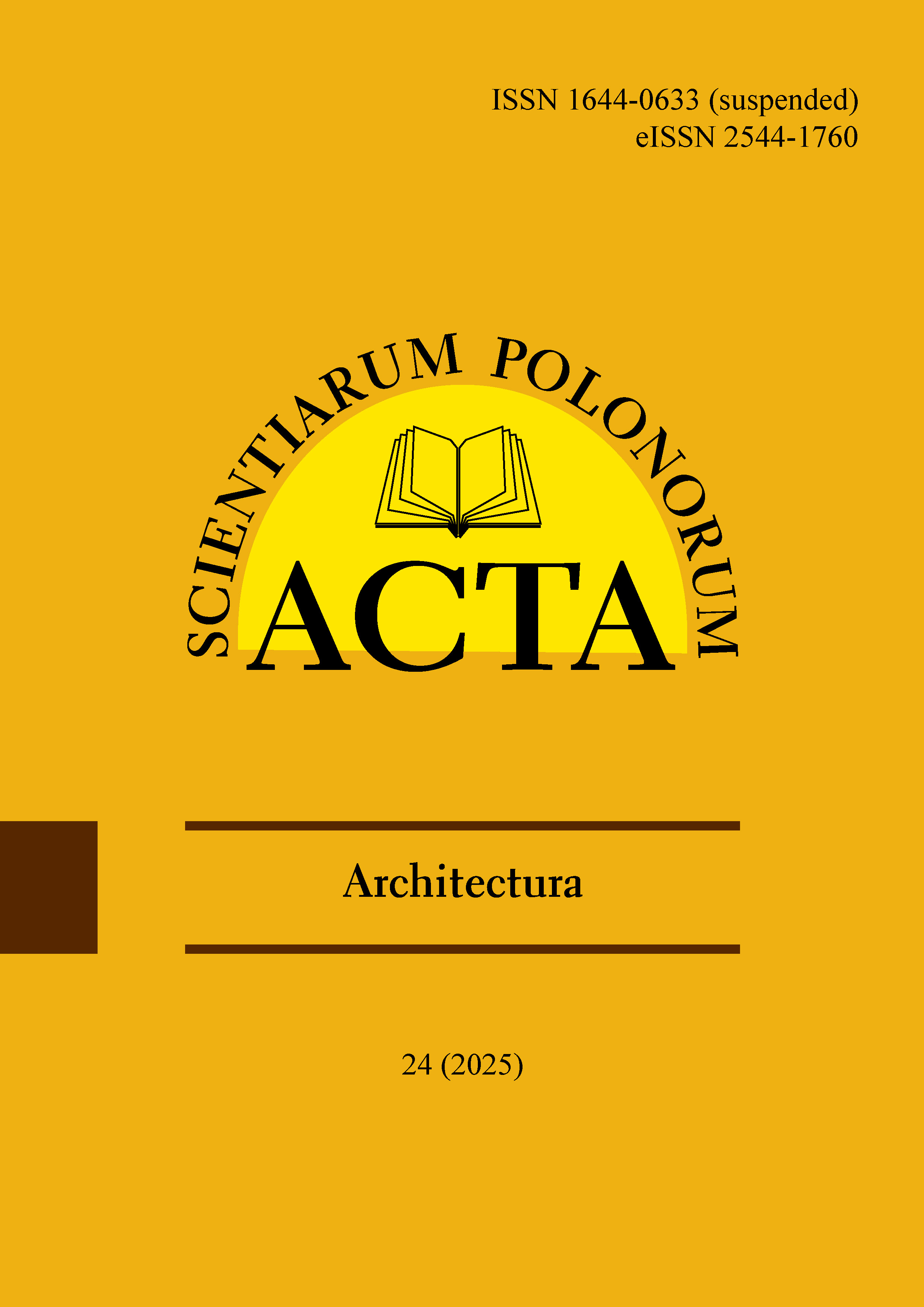Main Article Content
The paper presents a case study of the Perfumiarnia residential development in Poznań, demonstrating how an architectural vision was translated into spatial and technological solutions within the historical and natural context of the Łazarz district and Wilson Park. The methods include historical and urban context analysis, design analysis, and interpretation of changes during implementation. The findings indicate that architectural quality arises from a deep reading of the site, integration with greenery, and careful material and detail decisions, while maintaining urban coherence despite market pressures. In response to COVID-19 and rising costs, design adjustments were introduced without abandoning the core concept, emphasising flexibility, negotiation, and stakeholder cooperation. Perfumiarnia in Poznań is proof that architectural “dreams” can be realised when grounded in context analysis, pragmatism, and sensitivity to social and economic conditions.
Article Details
Alexander, C., Ishikawa, S., & Silverstein, M. (2008). Język wzorców. Miasta, budynki, konstrukcja. Gdańsk: GWP.
ArchDaily (2017). World’s First Vertical Forest City Breaks Ground in China (Liuzhou Forest City / Stefano Boeri Architetti). Retrieved from https://www.archdaily.com/874364/worlds-first-vertical-forest-city-breaks-ground-in-china?utm [accessed: 22.09.2025].
Architektura-Murator (2024). Aura Roberta Koniecznego. Rewolucyjne rozwiązania architektoniczne w Poznaniu – zielony manifest. Retrieved from https://architektura.muratorplus.pl/projekty/aura-roberta-koniecznego-rewolucyjne-rozwiazania-architektoniczne-w-poznaniu-zielony-manifest-aa-nuec-g5YE-Ek4c.html?utm [accessed: 22.09.2025].
Gehl, J. (2014). Miasta dla ludzi. Kraków: Wydawnictwo RAM.
Główny Urząd Statystyczny [GUS]. (2022). Ceny produkcji budowlano-montażowej – informacje i komunikaty 2020–2022. Warszawa.
Kodym-Kozaczko, G. (2007). Rozwój przestrzenny Poznania od połowy XIX do początków XX wieku. Poznań: Wydawnictwo Naukowe UAM.
KWK Promes (2023). AURA – opis projektu. Retrieved from https://www.kwkpromes.pl/aura-2/18110 [accessed: 22.09.2025].
Narodowy Bank Polski [NBP]. (2023). Informacja o cenach mieszkań i sytuacji na rynku nieruchomości w III kw. 2023 r. Warszawa.
Palmiarnia Poznańska (2021). Historia Palmiarni i Parku Wilsona. Retrieved from https://palmiarnia.poznan.pl/park-wilsona/historia/ [accessed: 22.09.2025].
Poznańskie Klimaty (2020). Park Wilsona – jeden z najpiękniejszych parków Poznania. Retrieved from https://www.poznanskieklimaty.pl/park-wilsona-jeden-z-najpiekniejszych-parkow-poznania/?utm [accessed: 22.09.2025].
Rumież, A. (2021, December 22). Nowy Strzeszyn / Poznań, proj. Insomia. Retrieved from https://architektura.muratorplus.pl/biblioteka/nowy-strzeszyn-poznan-aa-sKiS-NFAV-oEjL.html?utm [accessed: 22.09.2025].
Stefano Boeri Architetti (2017). Liuzhou Forest City – project. Retrieved from https://www.stefanoboeriarchitetti.net/en/project/liuzhou-forest-city/ [accessed: 22.09.2025].
Yin, R. K. (2015). Studium przypadku w badaniach naukowych. Projektowanie i metody. Kraków: WUJ.
Downloads

This work is licensed under a Creative Commons Attribution-NonCommercial 4.0 International License.

